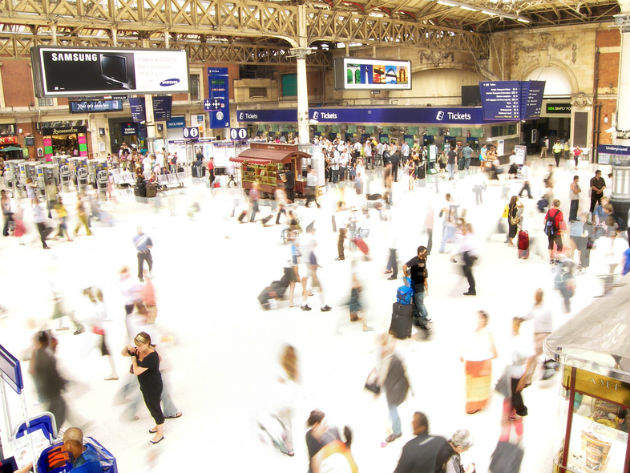

Focusing on customers will not only increase passenger revenue and reduce negative comments but will lead to efficiencies, thanks to the development of more relevant products and services and lower R&D costs, as passengers will tell you what they want.

Discover B2B Marketing That Performs
Combine business intelligence and editorial excellence to reach engaged professionals across 36 leading media platforms.
Rail travel is a complex process involving many different stakeholders to deliver the end-product and usage is growing: passenger journeys in Great Britain reached 418.5 million in 2016-2017 Q1 (April to June), an increase of 1.6% from the from the same quarter in 2015-2016.
However, passengers don’t care about the logistical problems companies face. Thanks to their engagement with a new breed of business, such as Airbnb and Uber, they have expectations of a seamless, frictionless travel experience, and social media provides numerous channels for venting frustration if this is not delivered.
Online services such as Uber understand that being just ‘good enough’ is not going to deliver growth or help them benefit from lifetime customer value. The disruptors are using the latest technology to help customers get what they want when they want it, and they realise mobile devices are increasingly the conduit for such interaction. Mobile devices will account for 75% of global internet use next year, according to the latest figures from media agency Zenith, and train companies need to figure out how to optimise their customer experience for these devices.
What do modern travellers expect?
Passengers want a seamless experience across all devices and touchpoints; access to relevant content and information in real-time to help make the best travel decision; instant response from a train operating company (TOC) when contacted; a personalised, tailored service that recognises individual preferences; and channels for feedback that are heeded.

US Tariffs are shifting - will you react or anticipate?
Don’t let policy changes catch you off guard. Stay proactive with real-time data and expert analysis.
By GlobalDataIf TOCs consider other forms of transport, from road to air, as competitors, then they must accept that they are lagging behind in providing a positive travel experience. However, if they are able to understand passenger frustrations, they can begin to develop technology-driven solutions that improve the experience, if not resolve the underlying problem.
The top five complaints of rail passengers are cited as punctuality, on-board facilities, ticket buying facilities, sufficient room to sit/stand, and ticketing and refunds policies. In each case the technology exists to help tackle these issues.
Take ticketing, Greyhound Lines in the US is overhauling its paper ticket system: it now plans to provide all drivers with iPhones and is developing an app so customers can present e-tickets on their mobile devices that can be scanned or swiped on-board.
The benefits are numerous. The bus company will have more information on individual customers to aid personalisation; it will be able to gauge a customer’s long-term value to the business, and it will have real-time inventory information to help develop a better yield-management model for ticket pricing. Swiping rather than inserting a card ticket should also improve passenger flow and reduce platform boarding delays
When will train companies switch over?
Surfacing data is the key to improvement and TOCs possess a wealth of information on passenger volumes and behaviour alongside real-time information about train punctuality, track problems and other variables, from weather to temperature.
If data can flow smoothly through the company’s systems to the passenger touchpoints – be these the website, call centre or ‘in the field’ teams – then it can be used to empower and inform customers. This means removing blockages and breaking down siloes both within a TOC and between companies: the future for ‘smart’ transport networks lies in complete interoperability of systems so essential information can pass freely.
Additionally, airlines are investing in technology from hand-held devices for cabin crew to mobile apps that provide relevant real-time data for passengers and provide help and advice. Their aim is to be a trusted ‘travel concierge’ for the whole trip.
TOCs should be following suit and equipping staff with networked devices so they can deliver a more personalised experience and quickly identify individual needs. For instance, pregnant women may choose to register their condition online and their boarding time/station, so that that enough seats reserved ‘for the elderly and infirm’ are vacant – it beats wearing a ‘baby on board’ badge and hoping someone is feeling chivalrous.
Putting tech in the hands of staff
Station staff can be provided with real-time information via mobile devices to explain the reason for a delay or warn of problems ahead of time. This would allow passengers to consider alternatives and at least manage expectations of when they might arrive. To be truly helpful, alternative travel suggestions could be made via push notification, apps or face-to-face staff empowered to give instant refunds via payment technology.
Likewise, integrated systems could allow driver/guards visibility of seat capacity – passengers could be guided to vacant seats and standing congestion reduced. There could be ‘seats full’ notices activated on the interior door between carriages so no-one wasted time traipsing through the entire train looking for a space. Putting yourself in the passenger’s shoes will give a genuine understanding of where tech can help with significant improvements.
One word of caution, while technology is the enabler it cannot deliver these ascribed benefits unless an organisation’s operations and company culture are aligned to be customer-centric rather than product-centric. Then the whole company will be on track to make train travel more pleasant and will be able to build loyalty and increase revenue.



